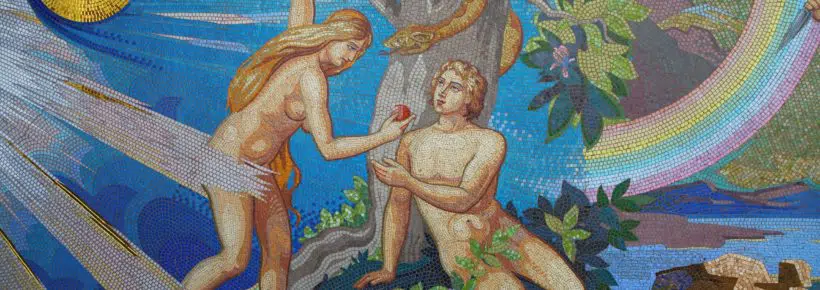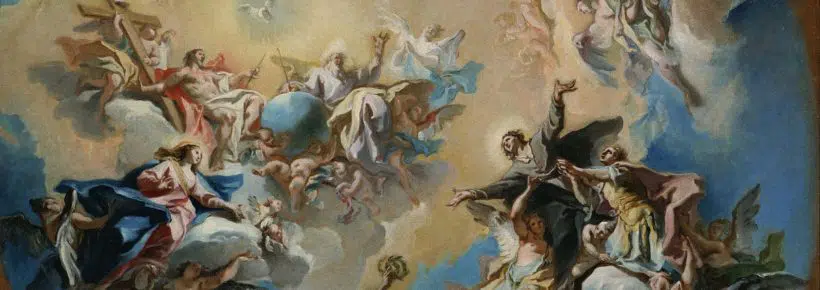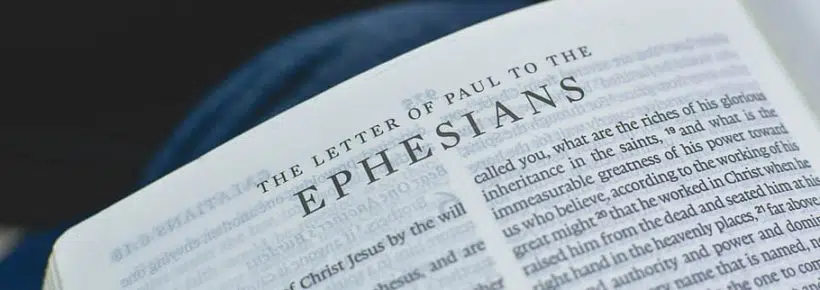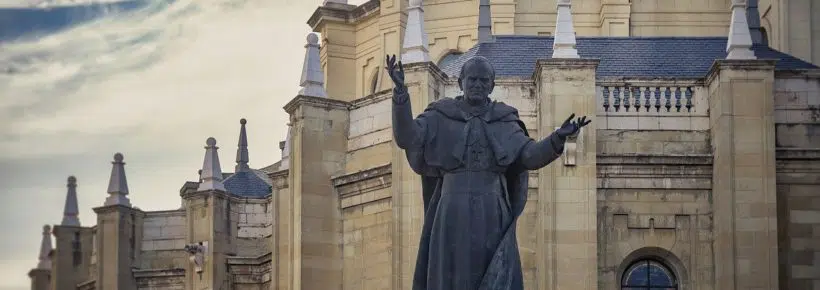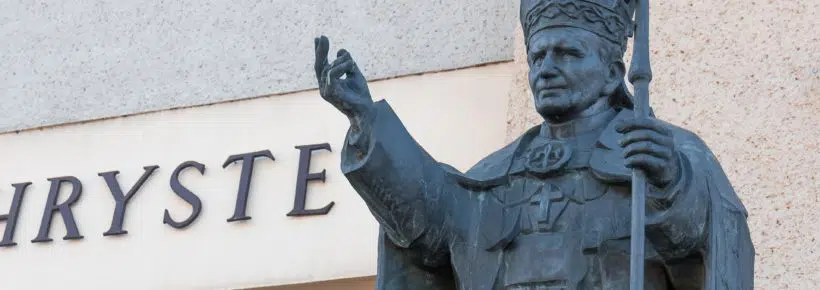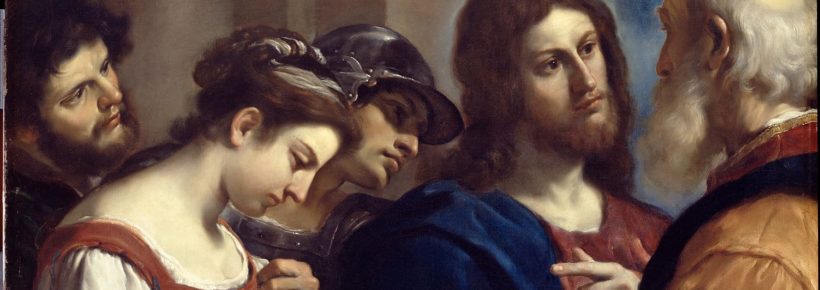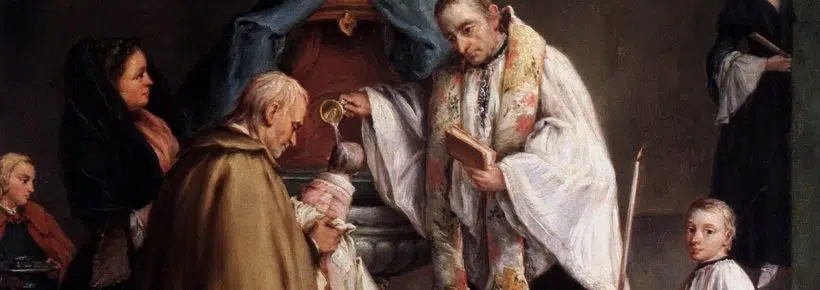Previous articles in this series:
- What Is the Theology of the Body?
- Human Dignity and the Conjugal Meaning of the Body
- The Beginning: The Original Unity of Man and Woman
- Purity of Heart
Next articles in this series:
- Christian Virginity and Celibacy for the Kingdom of God
- The Sacrament of Marriage
- Love and Fertility
In our previous article we discussed the topic of purity of heart, as covered in the second cycle of catechesis (24-63) of St. John Paul II on the theology of the body. This article continues with the third cycle of the Holy Father’s catechesis (64-72) on the topic of the resurrection of the body.
This article will cover:
- Why the resurrection of the body is the topic of the third cycle
- How Jesus approached this teaching
- What Jesus actually taught about the resurrection of the body
- Why men and women will not marry in the final resurrection
- How the teaching of St. Paul about the resurrection complements that of Jesus
- What the early Church said about the resurrection
1. Why is the resurrection of the body the subject of the third cycle?
In our previous article we discussed purity of heart. As we indicated, the heart represents the interior of the human person, the center of his soul, his interior and spiritual dimension. It is now time to discuss the material dimension of the human person: his body.
Recall that according to the teaching of the Catholic Church, which St. John Paul II follows, the human person is a substantial composite of body and soul (see CCC 362-368). The human body is an intrinsic part of the human person.
As we also stated in the previous article, Jesus came to teach us an ethos of the human heart: a set of values and virtues that enable the heart to be pure. In this article, we approach the ethos of the human body Jesus came to teach us. This ethos of the body is linked to the teaching of St. Paul on the redemption of the body that Jesus also came to accomplish for us. If we live by Jesus’ teachings on the ethos of the heart and of the body, we shall become, under the power of His redemptive grace, the new person He wants us to be.
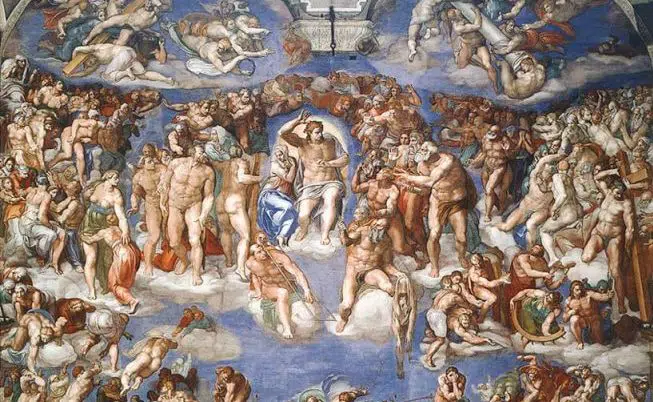
The Last Judgment (Michelangelo)
This is the famous “resurrection of the dead” that is referenced at every Holy Mass in the Nicene Creed. The Resurrection of Jesus symbolizes how we ourselves will be raised up at the Second Coming.
At the end of the world, there will be a general resurrection, of both the just and the unjust. The immortal soul and body will once again be joined at this time.
The resurrected human body in Heaven is the fulfillment of the redemption of the body that we must work out under God’s grace here on earth. Therefore, just as the state of original innocence shed light on the men and women we ought to be, so the future resurrection of the body, whose glory is similar to that of Jesus’ own resurrected body, illuminates how we ought to live the redemption of our bodies here on earth.
The damned, too, will resurrect and have their bodies. But their bodies will not possess the same qualities that those in Heaven will possess. The bodies in Heaven will be incorruptible, unable to experience pain or suffering and will experience eternal life, whereas those in hell will experience an unquenchable pain due to the separation from God.
Who will rise? All the dead will rise, “those who have done good, to the resurrection of life, and those who have done evil, to the resurrection of judgement.” (CCC 998)
Currently, Jesus and Mary both have their glorified bodies in Heaven. Jesus ascended into Heaven in front of His Apostles 40 days after resurrecting from the dead. His Mother, Mary, was assumed, body and soul, into Heaven. (It is unclear whether Mary suffered death or fell into a sort of slumber first.)
2. How did Jesus approach his teaching on the resurrection of the body?
As in the case of Jesus’ teaching on the unity and indissolubility of marriage, His teaching on the resurrection of the body was given in the context of a polemic with some of Israel’s religious leaders of his time. But in this case the debate was against the Sadducees. Unlike the Pharisees, the Sadducees did not believe in the resurrection of the human body. They only recognized as sacred the first five books of the Bible: Genesis, Exodus, Leviticus, Numbers, and Deuteronomy. According to them, these books did not teach anything about the resurrection.
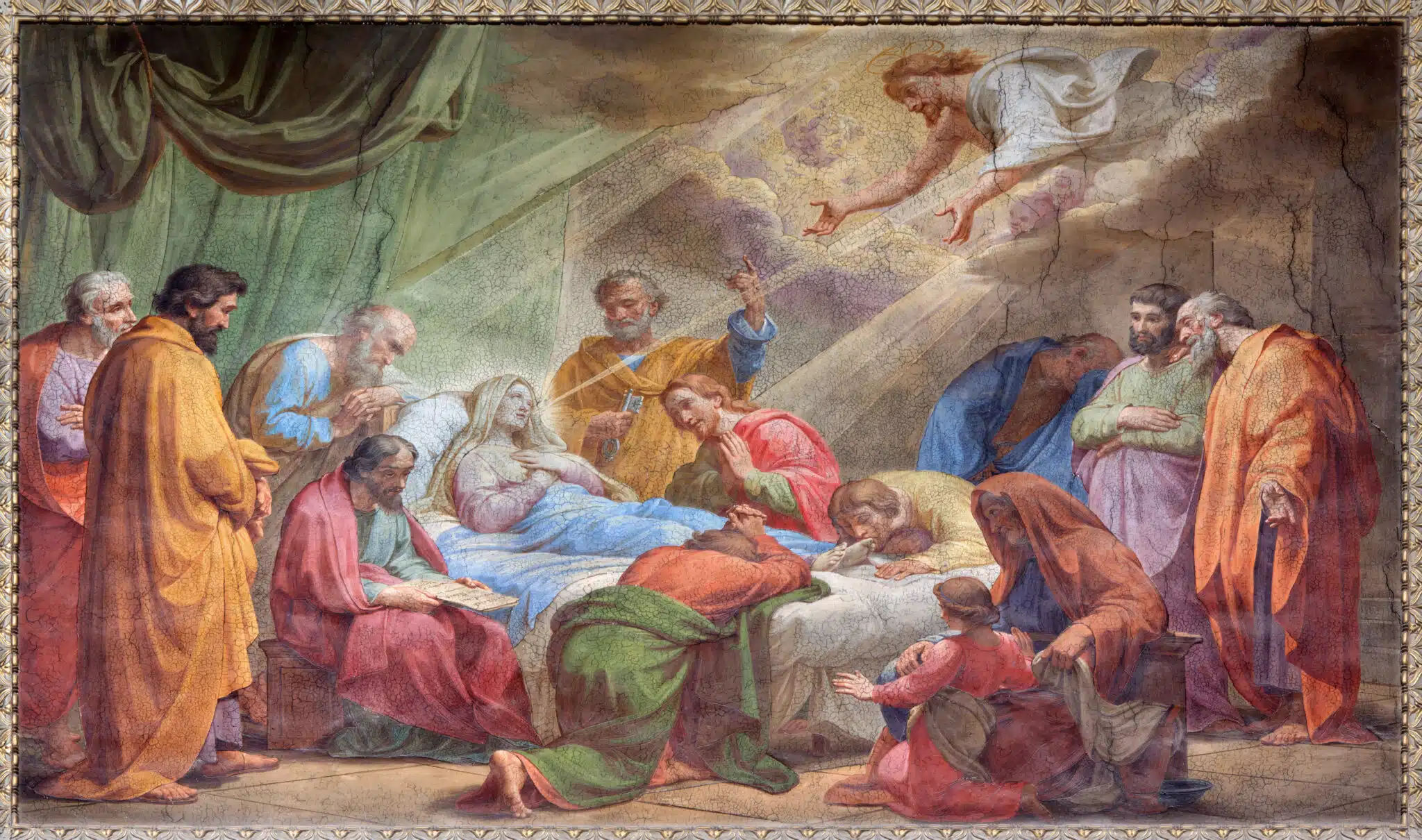
The Dormition of Virgin Mary fresco in Basilica di Sant Agostino (Augustine) by Pietro Gagliardi, 19th cent.
The debate is narrated in Matthew 22:24-30, Mark 12:18-27, and Luke 20:27-40. All three texts are virtually identical, except that Luke’s is more complete. That is why this will be the passage we shall quote as the key text for this entire cycle:
And there came to him some of the Sadducees, who deny that there is any resurrection, and they asked him, saying: Master, Moses wrote unto us, if any man’s brother die, having a wife, and he leave no children, that his brother should take her to wife, and raise up seed unto his brother. There were therefore seven brethren: and the first took a wife, and died without children. And the next took her to wife, and he also died childless.
And the third took her. And in like manner all the seven, and they left no children, and died. Last of all the woman died also. In the resurrection therefore, whose wife of them shall she be? For all the seven had her to wife. And Jesus said to them: The children of this world marry, and are given in marriage: but they that shall be accounted worthy of that world, and of the resurrection from the dead, shall neither be married, nor take wives.
Neither can they die any more: for they are equal to the angels, and are the children of God, being the children of the resurrection. Now that the dead rise again, Moses also shewed, at the bush, when he called the Lord, the God of Abraham, and the God of Isaac, and the God of Jacob; for he is not the God of the dead, but of the living: for all live to him. And some of the scribes answering, said to him: Master, thou hast said well. And after that they durst not ask him any more questions.
The Sadducees tried to ridicule the doctrine of the resurrection by means of a weird case. But Jesus showed them that they were wrong by quoting the passage from Exodus 3:6, one of the books the Sadducees believed was inspired by God.
In Matthew’s Gospel, Jesus tells the Sadducees that they are wrong on two accounts:
- They do not know the Scriptures (they have a very superficial understanding of the Word of God).
- They do not know the power of God (which is needed to understand the Bible correctly). By disregarding the power of God, they even deny the very possibility of the resurrection.
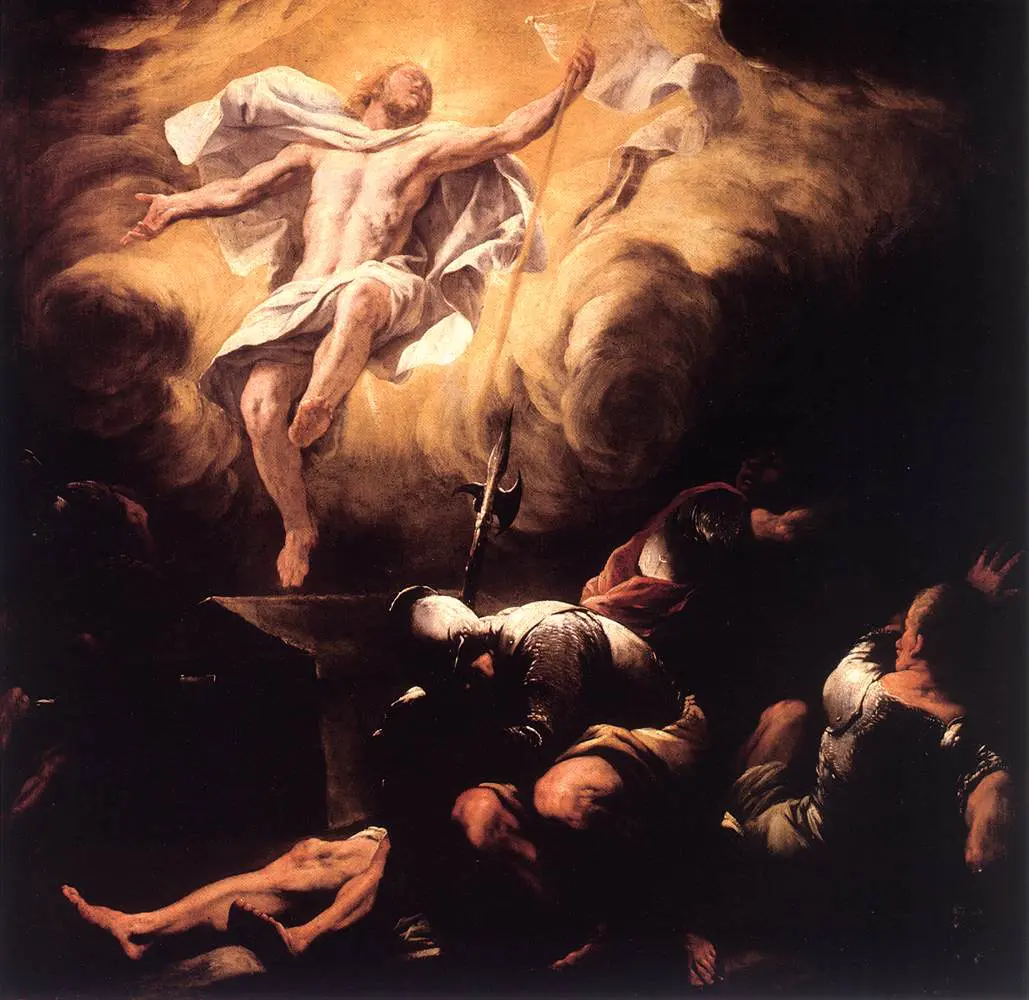
Resurrection (Luca Giordano)
3. What did Jesus teach about the resurrection of the body in these passages?
First of all, according to Luke 20:38, where Jesus says that “He is not the God of the dead, but of the living: for all live to him” (which is not in the other two versions), He is teaching the immortality of the soul, since the final resurrection has not taken place yet. But the Sadducees did not believe in this doctrine, either.
Combining the three passages, Jesus teaches that man and woman will continue to be male and female in the resurrection. This teaching highlights once again the fact that the human body, including its sex, is indeed intrinsic to the human person and is not disregarded in the afterlife. On the contrary, soul and body will be more united than ever.
The Christian view of salvation is not that the soul must “escape” the body. The body is not a “prison” of the soul (as Plato and other ancient philosophers wrongly believed). On the contrary, the Christian view of morality and of salvation is the ever-increasing integration of body and soul.
As the Christian progresses in his moral life – which is the road to salvation – he is able to submit his body to his soul and his soul to the Holy Spirit. This bodily submission does not mean at all that the body is something negative. Far from that, it is precisely in this free submission that the body becomes more itself because it is enlivened by a soul filled with the Holy Spirit.
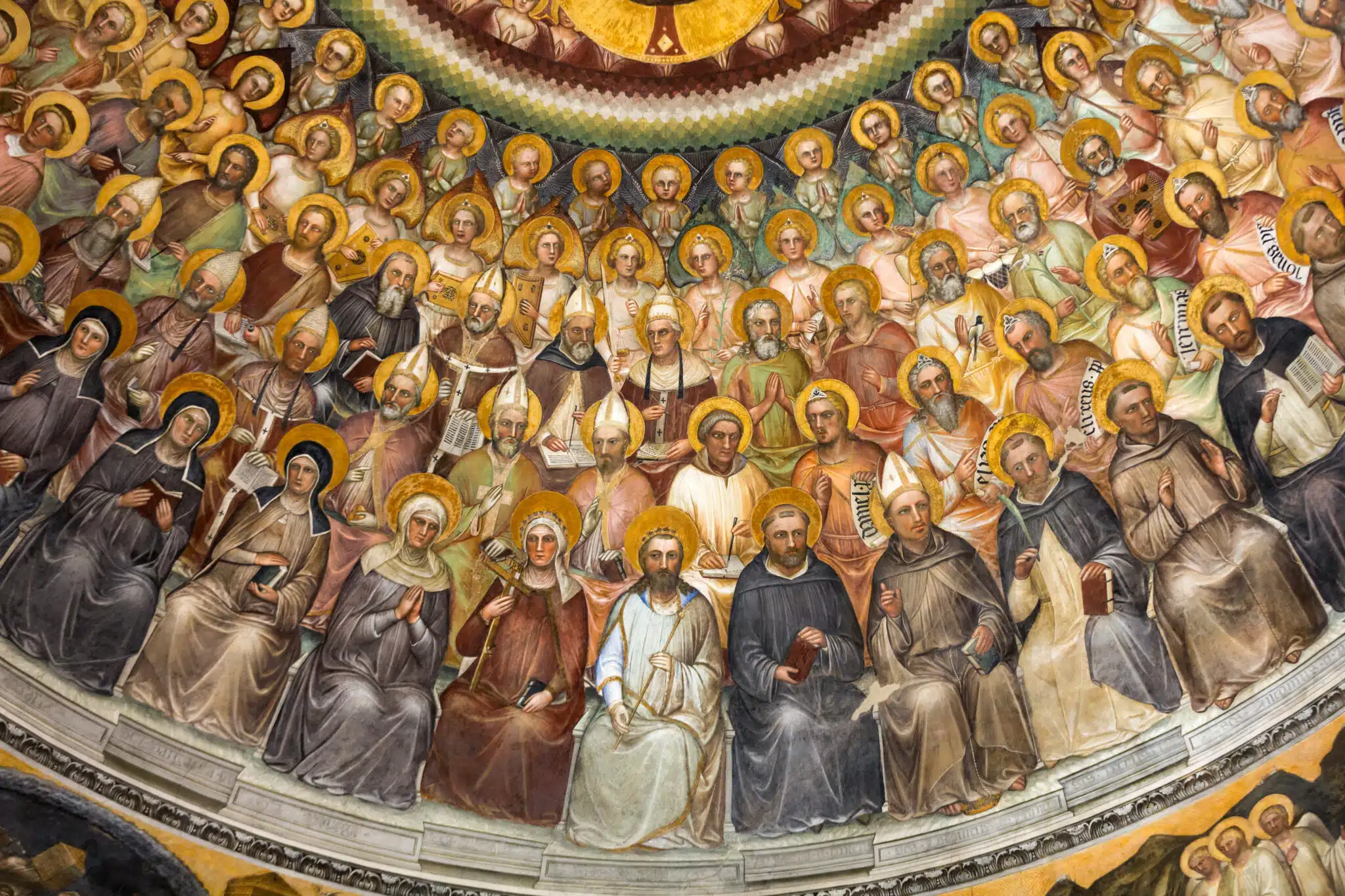
The frescos in Baptistery of Duomo or The Cathedral of Santa Maria Assunta by Giusto de Menabuoi (1375-1376)
The whole person living under the power of the Holy Spirit accomplishes the redemption of both body and soul, as well as their perfect integration in the world to come and in the final resurrection of the body.
In the resurrected state, both body and soul will be divinized by God. This means that they will both be glorified by God by participating in the Glory of God, in His Trinitarian divine life. Another way of saying it is that the whole person will be spiritualized by God. In particular, the human body will attain the perfection of its personal and conjugal meanings.
This teaching about the divinization and spiritualization of the human person in the world to come can be deduced from Luke 20:36: ¨They will are equal to the angels.” It is clear from what Jesus taught about the resurrection of the human body that the human person will not assume the angelic nature but will remain human, but in a glorified state of both body and soul.
This final state of the human person will be superior to that of the original innocence. Man and woman in the original innocence were called to walk with God and eventually reach this glorified state. Original sin frustrated this call, but Jesus came to restore it and to enable man and woman to attain it.
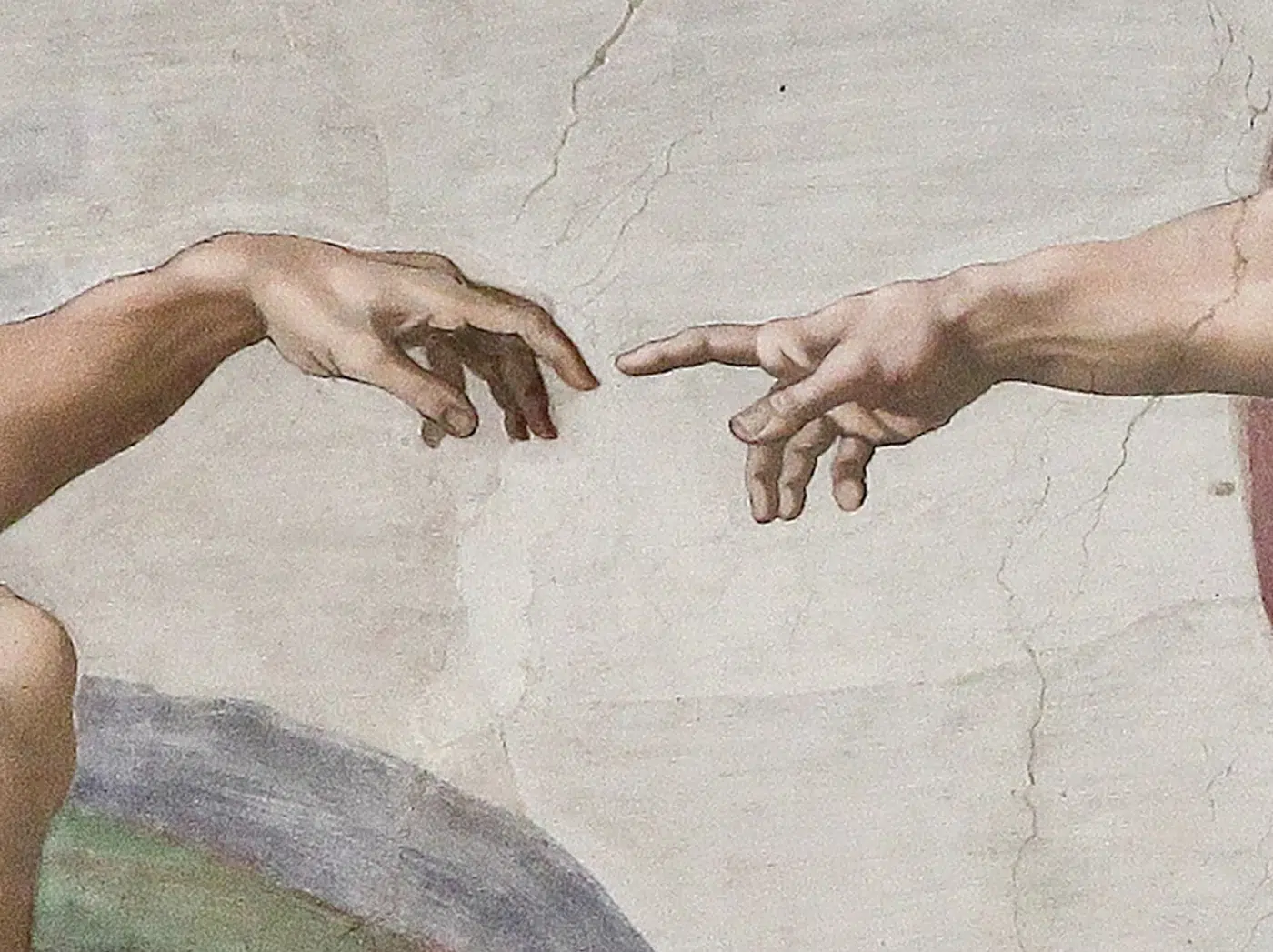
The Creation of Adam by Michelangelo
4. But Jesus taught that in the final resurrection men and women will not marry?
Jesus’ teaching about men and women not marrying is not a degradation of marriage. It is simply that marriage is only for this life. Once its role has been fulfilled, there will not be any need to continue this institution in the afterlife.
This teaching should not be interpreted either by suggesting that marriage is only for procreation. According to this view, once the number of human beings God planned to create is completed, then marriage is not needed any more. But Jesus did not teach that. We have already seen in the previous articles how highly Jesus regarded the unity of man and woman in marriage.
The main point of Jesus’ teaching is that the final resurrected state of the human person is a virginal state. And the reason for this is that the union of the human person with God will be so profound that no other union will be needed; God’s love will completely fill the soul and body of the human person.
But this does not mean that every person will forget about his loved ones from earth. On the contrary, his God-filled love will enable everyone to love and be united to his neighbor like never before, in complete self-donation devoid of any selfishness.
Christian marriage, by being a sacrament, is an efficacious sign that makes present the union between Christ and His Church (See Ephesians 5:21-33). But in Heaven there will be no need to mediate this union with God because each person will be directly and completely united to God.
This latter teaching implies that the virginal or celibate state here on earth is superior to the marital state. This truth has nothing to do with an inferior view of human sexuality and marriage. What it means is that Christian marriage, by being a sacramental sign, is a mediation between the spouses and God. But in the consecrated life, the person is already living in anticipation of this direct union with God in a virginal state, without the need of any mediation.
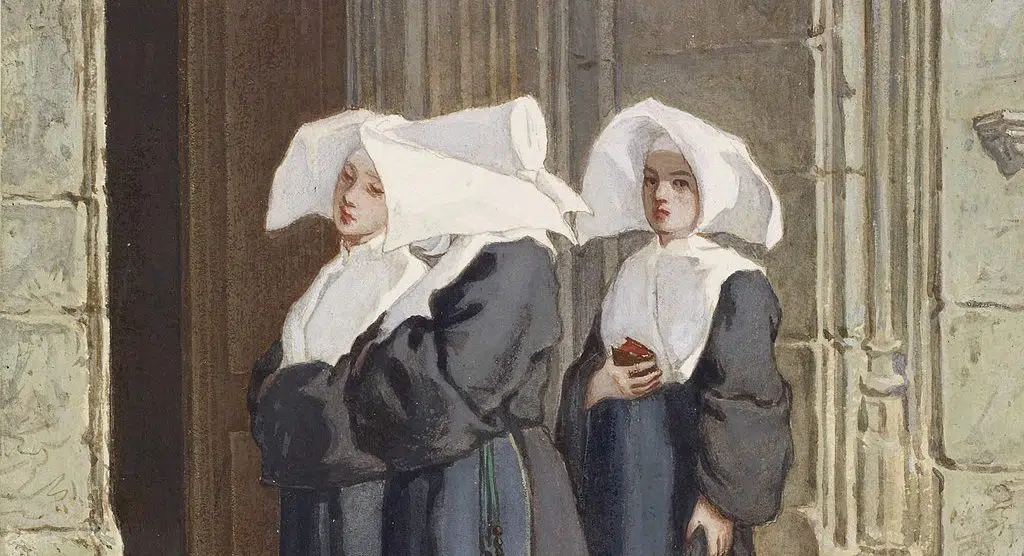
Three Sisters of Charity of St. Vincent de Paul in the Portal of a Church (Armand Gautier)
5. What did St. Paul teach about the resurrection and how does his teaching complement that of Jesus?
Jesus’ teaching on the resurrection deeply impacted St. Paul. The Apostle of the Gentiles himself experienced the presence of the Resurrected Christ while he was persecuting Christians (see Acts 9:26-27).
St. Paul’s teaching on the resurrection is mainly located in 1 Corinthians 15:3-57. He taught that Christ’s Resurrection is the foundation of our faith (see verses 17-20) and God’s victory over death (see verses 26 and 54-55).
St. Paul taught about the resurrected human body by contrasting it to the earthly human body (see verses 35-55). More specifically, he calls the resurrected body a celestial or spiritual body, and the earthly body a terrestrial body. He does not despise the earthly human body when he uses pejorative terms, such as “perishable” and “sown in weakness and dishonor” (verses 42 and 43). On the contrary, he is merely indicating that our earthly bodies are not in their final state but will be transformed into an unimaginable glorified or spiritualized state. Both the body and the soul will be glorified by God.
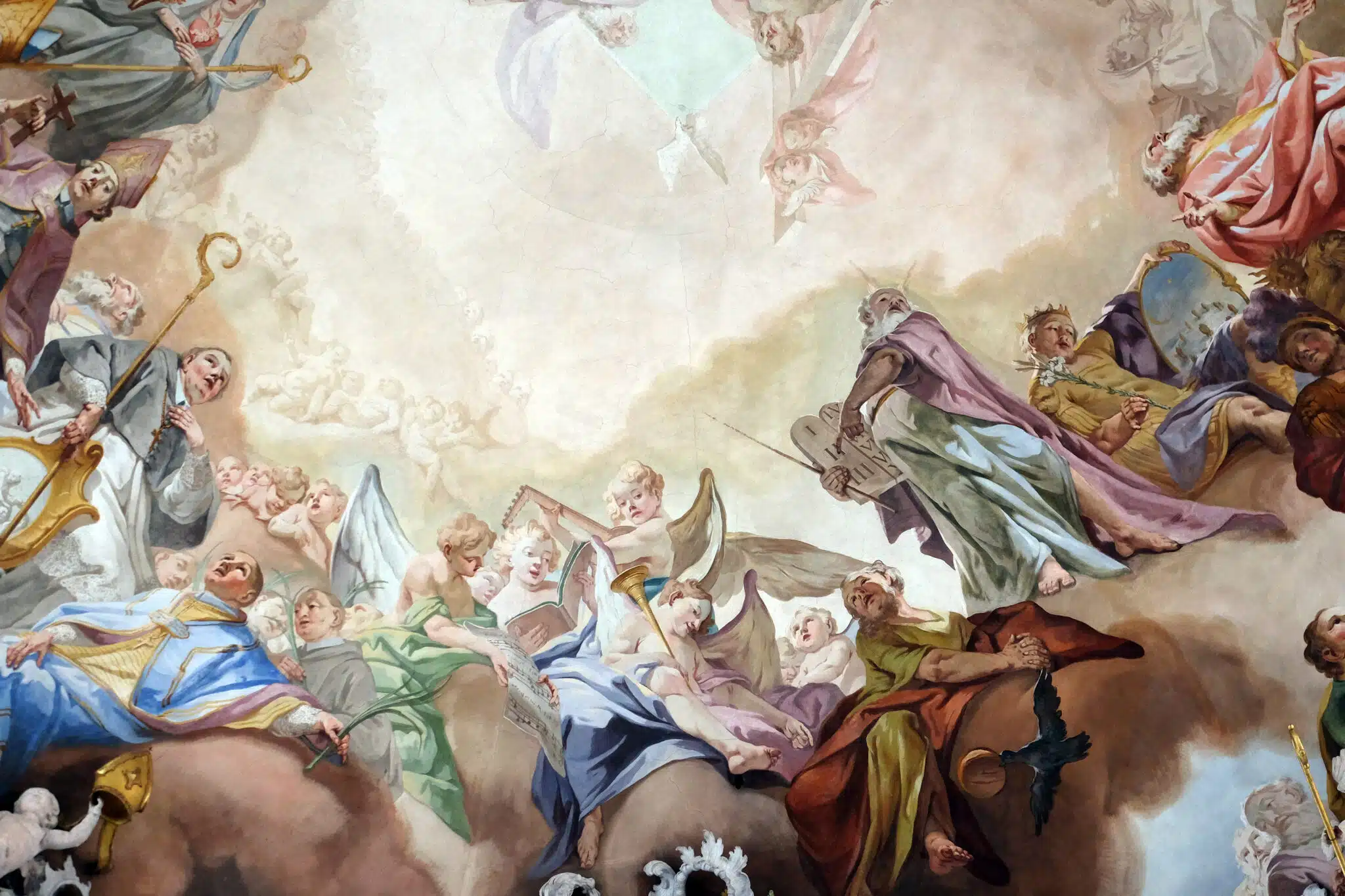
Last Judgment and Glorification of the Benedictine Order, detail of fresco by Matthaus Gunther in Benedictine monastery church in Amorbach, Germany
St. Paul is not a dualist, one who denies the unity of body and soul in the human person. His holistic view of the human person is clearly shown not only in this chapter, where he insists in the final resurrection of the body, but also in the very fact that he uses the image of the human body to illustrate his understanding of the Church as the body of Christ (see, for example, 1 Corinthians 12:12-27).
In fact, he went beyond the glorified state of the resurrected human body and added that the whole material creation will also be glorified:
For the expectation of the creature waiteth for the revelation of the sons of God. For the creature was made subject to vanity, not willingly, but by reason of him that made it subject, in hope: because the creature also itself shall be delivered from the servitude of corruption, into the liberty of the glory of the children of God. For we know that every creature groaneth and travaileth in pain, even till now. And not only it, but ourselves also, who have the firstfruits of the Spirit, even we ourselves groan within ourselves, waiting for the adoption of the sons of God, the redemption of our body. (Romans 8:19-23)
In this way, St. Paul’s teaching on the resurrection is coherent to that of Christ and at the same time complements it.
6. What does the early Church teach of the resurrection of the flesh?
We see evidence of the resurrection of our bodies from the Church Fathers, as well. The Church Fathers sought to warn us that we will be rewarded on account of our actions and that the resurrection of the body shall occur at Jesus’ Second Coming. Below are just a few examples:
Justin Martyr
Indeed, God calls even the body to resurrection and promises it everlasting life. When he promises to save the man, he thereby makes his promise to the flesh. What is man but a rational living being composed of soul and body? Is the soul by itself a man? No, it is but the soul of a man. Can the body be called a man? No, it can but be called the body of a man. If, then, neither of these is by itself a man, but that which is composed of the two together is called a man, and if God has called man to life and resurrection, he has called not a part, but the whole, which is the soul and the body. (The Resurrection 8 [A.D. 153])
Theophilus of Antioch
God will raise up your flesh immortal with your soul; and then, having become immortal, you shall see the immortal, if you will believe in him now; and then you will realize that you have spoken against him unjustly. But you do not believe that the dead will be raised. When it happens, then you will believe, whether you want to or not; but unless you believe now, your faith then will be reckoned as unbelief. (To Autolycus 1:7-8 [A.D. 181])
Augustine
Perish the thought that the omnipotence of the Creator is unable, for the raising of our bodies and for the restoring of them to life, to call all [their] parts, which were consumed by beasts or by fire, or which disintegrated into dust or ashes, or were melted away into a fluid, or were evaporated away in vapors. (The City of God 22:20:2 [A.D. 419])
God, the wonderful and inexpressible Artisan, will, with a wonderful and inexpressible speed, restore our flesh from the whole of the material of which it was constituted, and it will make no difference to its reconstruction whether hairs go back to hairs and nails go back to nails, or whatever of these had perished be changed to flesh and be assigned to other parts of the body, while the providence of the Artisan will take care that nothing unseemly result. (Handbook of Faith, Hope, and Charity 23:89 [A.D. 421])
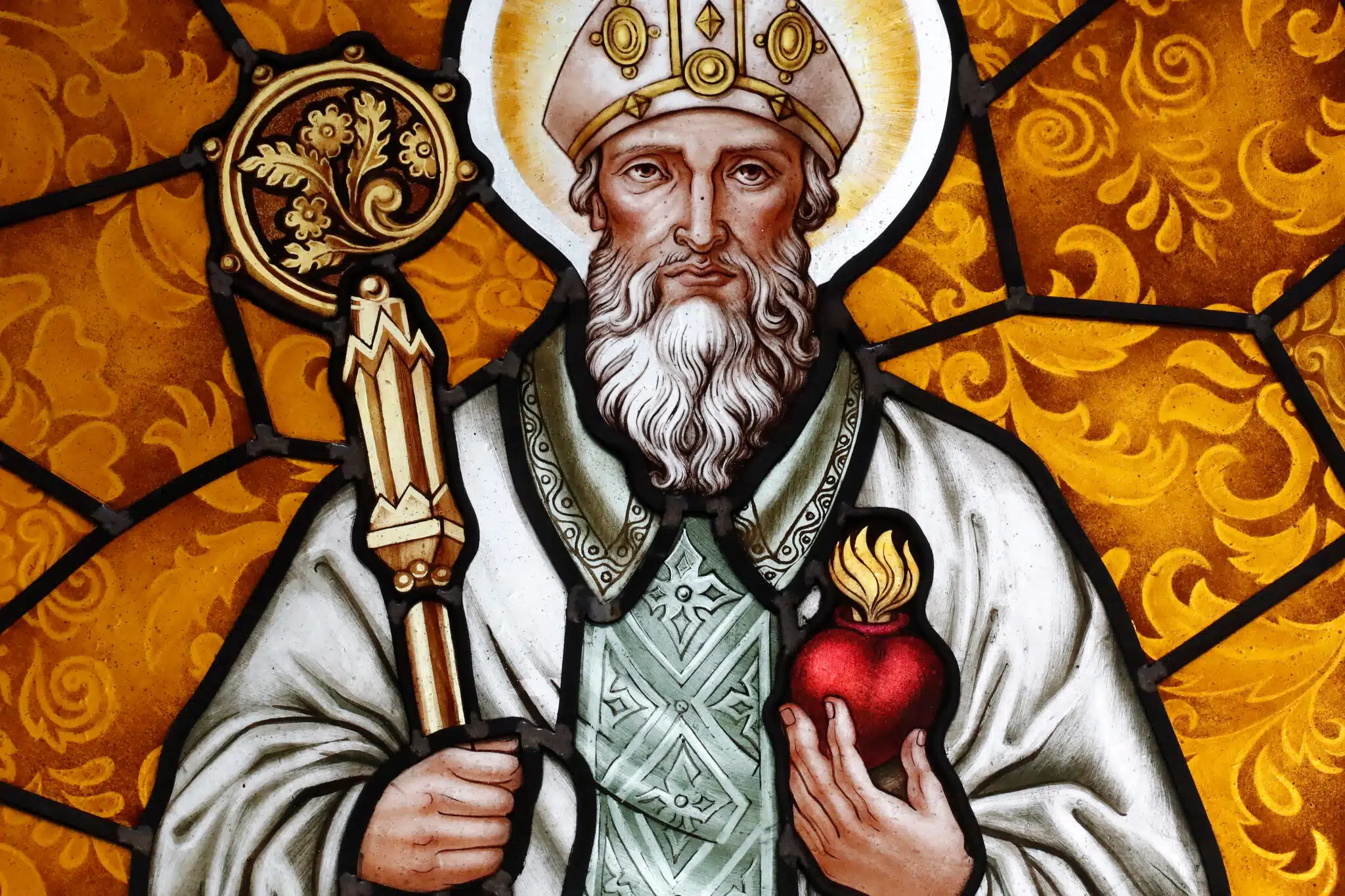
Saint Augustine of Hippo. Stained glass window in Thi Nghe Church, Ho Chi Minh City, Vietnam.
Additionally, both the Apostles’ Creed and the Nicene Creed reference the resurrection: “I believe…in the resurrection of the body and life everlasting” (Apostles’ Creed); “I look forward to the resurrection of the dead and the life of the world to come” (Nicene Creed).
Final Thoughts
What does St. John Paul II teach next?
So far, we have a clear picture of the original unity of man and woman, of original sin which tends to shatter that unity, and of the human person in body and soul on his way to redemption by Christ.
However, we need to know in more concrete terms how the human person, under the grace of God, lives out his soul-body redemption. This process of redemption must be situated in the context of Christ’s call (vocation) to love. There are essentially two Christian vocations: virginity or celibacy for the Kingdom of God, and the Sacrament of Marriage.
We discuss first virginity or celibacy for the Kingdom of God in the next article on cycle 4. Then we discuss the Sacrament of Marriage in the following article on cycle 5.
Since the theology of the body is a huge commentary on the encyclical Humanae Vitae, whose main topics are the transmission of life and conjugal love, we leave for the last article of cycle 6, the teaching of the Holy Father on love and fertility – keeping in mind that cycles 1-5 are a preparation for cycle 6.
Previous articles in this series:
- What Is the Theology of the Body?
- Human Dignity and the Conjugal Meaning of the Body
- The Beginning: The Original Unity of Man and Woman
- Purity of Heart
Next articles in this series:





